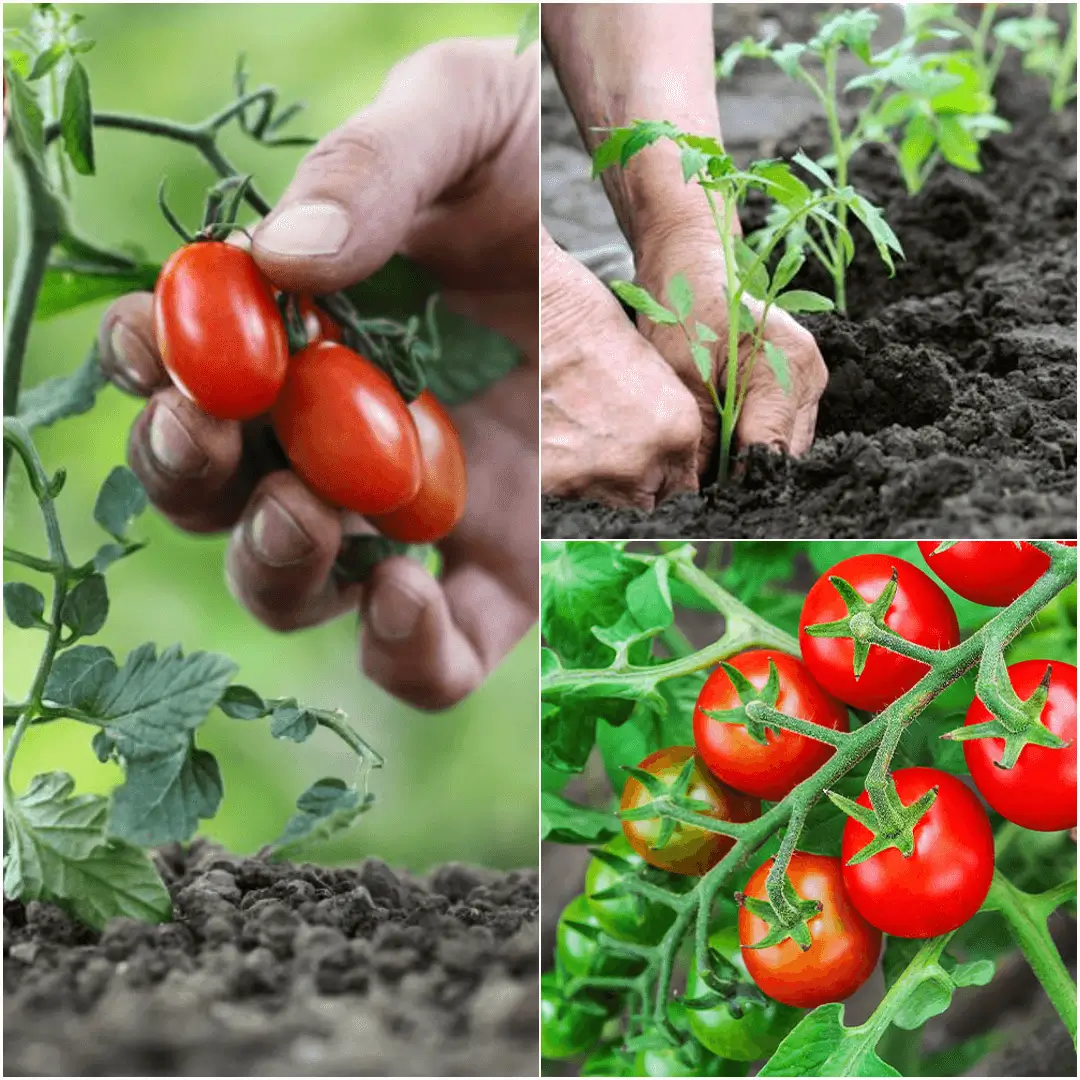Planting tomatoes is one of the most rewarding experiences for any gardener, whether you’re a seasoned pro or just getting your hands dirty for the first time. If you’ve ever wondered how to plant tomatoes successfully, you’re in the right place! Let’s dig into the details step by step.
1. Best Time to Plant Tomatoes
Understanding Frost Dates
Timing is everything when it comes to planting tomatoes. You’ll want to wait until after the last frost of spring. This is crucial because tomatoes are quite sensitive to cold temperatures. If you plant too early, those frosty nights could ruin your hard work!
Ideal Temperature Conditions
Aim for nighttime temperatures to be consistently above 10°C (50°F), with an ideal target of 15°C (59°F). It might seem tempting to plant as soon as the weather warms up, but trust me—planting too early can hinder growth. Tomatoes planted later often catch up and thrive.
2. Selecting Seedlings
What to Look for in Seedlings
When selecting seedlings, there are a few key traits to keep in mind. Look for short, stocky plants with dark green leaves that are free from yellow or black spots. Avoid any seedlings with blooms; you want them to focus on growing roots first.
Importance of Hardening Off
Before you transplant your seedlings, hardening them off is essential. This means gradually introducing them to outdoor conditions over a week or so. This process helps them adjust to their new environment and reduces transplant shock.
3. Where to Plant Tomatoes
Soil Requirements
Tomatoes thrive in rich, well-drained soil. Ensure the ground is packed with nutrients to give your plants the best start. A soil test can help determine pH levels and nutrient content.
Sunlight Needs
Choose a spot that gets at least 6 hours of direct sunlight daily. If you’re in a particularly hot climate, some afternoon shade can help protect your tomatoes from scorching.
4. How to Plant Tomatoes in the Ground
Preparation Steps
Hardened Seedlings
Make sure your seedlings are hardened off and the soil temperature is at least 10°C (50°F). If conditions aren’t ideal, don’t rush—waiting a week can make all the difference.
Transplant Timing
For optimal success, transplant on a cloudy day or in the evening. This gives your tomatoes time to adjust before facing the afternoon sun.
Spacing Your Plants
Proper spacing is crucial! Generally, you’ll want to space your tomato plants 18″ to 36″ apart, depending on the variety and how you plan to stake or prune them.
Digging and Preparing Holes
Deep Planting Techniques
Tomatoes actually do better when planted deeply. This encourages strong root systems. So, dig deep holes—at least 6 inches or more!
Soil Amendments
Enhance your planting holes with compost, bone meal, and slow-release fertilizer. Mixing these into the soil at the bottom of the holes helps the roots avoid direct contact with concentrated fertilizer.
Transplanting Seedlings
When you’re ready to plant, remove the leaves from the bottom half to two-thirds of the seedling. This prevents the leaves from rotting in the soil. Place the seedling into the hole, just beneath the bottom remaining leaves, and fill it back in with soil.
Watering Techniques
Once planted, water your seedlings thoroughly. Aim to keep the leaves dry; direct the water towards the roots. This helps prevent diseases that thrive in damp foliage.
Mulching for Health
Apply a layer of mulch around your plants—straw or compost works well. Mulch helps retain moisture and protects against soil-borne diseases splashing onto your plants.
Setting Up Support Systems
If you’re growing larger varieties, setting up supports is key. Do this at planting time to avoid disturbing the roots later. Cages, stakes, or trellises are all great options depending on the type of tomato you’re growing.
5. Basic Tips for Tomato Plant Care
Watering Requirements
Tomatoes need about 1-2 inches of water per week. Water deeply once or twice a week rather than daily, keeping the soil consistently moist.
Fertilizing Your Plants
Start with a rich compost mix at the beginning of the growing season, and feed your plants every two weeks with a balanced, water-soluble fertilizer. Look for formulas higher in phosphorus and potassium for healthy fruit development.
Pruning Techniques
Pruning is essential, especially for indeterminate varieties. It helps control the plant’s growth and can reduce the risk of disease. Check on your plants weekly to trim back excess growth and suckers.
By following these steps, you’ll be well on your way to planting and nurturing your tomato plants successfully! With a little care, you can enjoy a bountiful harvest that will make all the hard work worth it. Remember, gardening is a journey—don’t be afraid to experiment and learn as you go!
FAQs:
1. How do tomatoes need to be planted?
Tomatoes should be planted deeply, with the lower leaves removed to allow for better root development. Start by preparing holes in rich, well-drained soil. Amend the holes with compost and fertilizer if desired. Transplant the seedlings on a cloudy day or in the evening to minimize stress, and water them well after planting, keeping the leaves dry.
2. What is the best time to plant tomatoes?
The best time to plant tomatoes is after the last frost has passed and nighttime temperatures are consistently above 10°C (ideally around 15°C). Planting too early can hinder growth, so it’s essential to wait for ideal conditions to ensure healthy development.
3. Do tomatoes grow better in pots or in the ground?
Tomatoes can thrive in both pots and the ground, but each has its advantages. Growing in pots allows for easier mobility and is ideal for small spaces, while planting in the ground provides more room for root growth and access to nutrients. Choose the method that best suits your garden space and lifestyle.
4. What is the spacing for tomato plants?
Tomato plants should be spaced between 18 to 36 inches apart, depending on the variety and your support method. Indeterminate varieties may need more space for airflow and growth, while determinate varieties can be planted closer together. Proper spacing helps reduce competition for nutrients and promotes healthier plants.


